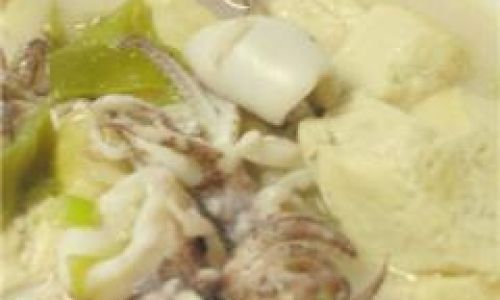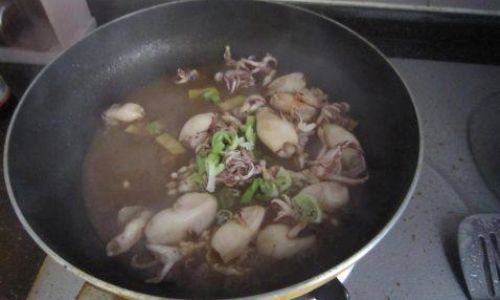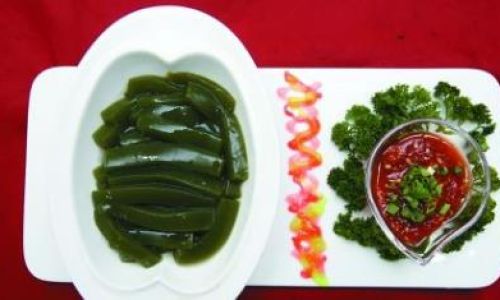Table of content
- Grilling or Chargrilling
- Pan-Frying with Crispy Coating
- Slow-Braising in Flavorful Liquids
- Steaming with Aromatics
- Raw Preparations (Sashimi or Ceviche)
- Stuffed and Baked
- Stir-Frying with Vegetables
- Recipe 1: Mediterranean-Style Grilled Cuttlefish with Herbed Chickpeas
- Recipe 2: Spicy Cuttlefish Stir-Fry with Black Bean Sauce
Cuttlefish, often mistaken for squid or octopus due to their similar appearances, are cephalopods that inhabit coastal waters worldwide. Renowned for their tender yet slightly chewy texture and mild, briny flavor, cuttlefish have become a prized ingredient in global cuisines, from Mediterranean stews to Asian stir-fries. However, their unique anatomy and delicate flesh require specific preparation techniques to unlock their full culinary potential. This guide delves into the intricacies of selecting, cleaning, and cooking cuttlefish, offering step-by-step instructions, creative recipes, and expert tips to transform this seafood gem into a restaurant-worthy dish.

Understanding Cuttlefish Anatomy and Selection
Before diving into preparation, it is essential to grasp the basic structure of a cuttlefish. Unlike squid, which have elongated bodies and fins running their entire length, cuttlefish possess a broader, oval-shaped mantle (the main body cavity) and a distinctive internal shell called a cuttlebone. This porous, chalky structure regulates buoyancy and is often discarded during cleaning. The tentacles, eight shorter arms, and two longer feeding tentacles surround a sharp, beak-like mouth, which must be removed carefully to avoid bitterness.
When selecting fresh cuttlefish, prioritize specimens with:
- Clear, glossy skin free from discoloration or slime.
- Firm flesh that springs back when pressed.
- A mild, oceanic aroma without hints of ammonia (a sign of spoilage).
- Intact eyes that appear bright and convex, not sunken or cloudy.
Frozen cuttlefish is a viable alternative if fresh is unavailable, but ensure it is vacuum-sealed or properly iced to maintain quality. Thawing should occur gradually in the refrigerator to preserve texture.
Cleaning and Preparing Cuttlefish: A Step-by-Step Process
Proper cleaning is non-negotiable for optimal flavor and safety. Follow this method:
-
Remove the Head and Tentacles:
- Grasp the cuttlefish firmly and twist the head away from the mantle. The innards (viscera) will often pull out with the head.
- If residual organs remain inside the mantle, gently scrape them out using your finger or a spoon.
-
Extract the Cuttlebone:
Locate the thin, translucent membrane inside the mantle. Slide a finger beneath it to loosen the rigid cuttlebone, then lift and discard it.
-
Peel Off the Skin:
The outer skin (or “purse”) is edible but can be tough. To remove it, grip a corner of the skin and peel it away from the flesh. If stubborn, blanch the mantle in boiling water for 10–15 seconds before peeling.
-
Clean the Tentacles:
Separate the tentacles from the head by cutting just below the eyes. Discard the eyes and beak (located at the base of the tentacles) by squeezing gently until it pops out.
-
Rinse Thoroughly:
Rinse all components under cold running water to remove any residual sand, ink, or viscera.
Cooking Methods: From Quick Sear to Slow Braises
Cuttlefish’s low fat content and dense muscle structure demand careful cooking to avoid toughness. Here are seven techniques to master:
Grilling or Chargrilling
Ideal for smaller cuttlefish, grilling imparts a smoky char while retaining moisture.
- Technique: Marinate mantles and tentacles in olive oil, garlic, and herbs for 30 minutes. Grill over high heat for 2–3 minutes per side until slightly charred.
- Pro Tip: Slice the mantle into rings post-grilling to prevent curling.
Pan-Frying with Crispy Coating
A light batter or breadcrumb crust creates contrast.
- Technique: Dredge cuttlefish rings in seasoned flour, dip in beaten egg, and coat in panko. Fry in hot oil until golden (2–3 minutes). Serve with lemon wedges.
Slow-Braising in Flavorful Liquids
Tenderizes tougher cuts and infuses flavor.
- Technique: Simmer mantle pieces in tomato sauce, white wine, or coconut milk with aromatics (onion, garlic, herbs) for 45–60 minutes until tender.
Steaming with Aromatics
A delicate method that preserves natural flavors.
- Technique: Place cuttlefish on a steamer basket with ginger, scallions, and soy sauce. Steam for 8–10 minutes until opaque.
Raw Preparations (Sashimi or Ceviche)
Only use sushi-grade cuttlefish for raw dishes.

- Technique: Slice the mantle thinly and serve with soy sauce, wasabi, or citrus juice (for ceviche). Marinate in lime juice for 10–15 minutes to “cook” lightly.
Stuffed and Baked
A showstopping dish for dinner parties.
- Technique: Fill cleaned mantles with a mixture of breadcrumbs, herbs, and Parmesan. Bake at 375°F (190°C) for 20–25 minutes until golden.
Stir-Frying with Vegetables
Quick, high-heat cooking preserves texture.
- Technique: Slice mantles into rings and stir-fry with bell peppers, snap peas, and a sauce of oyster sauce, soy, and ginger. Cook for 3–4 minutes.
Recipes to Elevate Your Cuttlefish Game
Recipe 1: Mediterranean-Style Grilled Cuttlefish with Herbed Chickpeas
Ingredients (Serves 4):
- 4 medium cuttlefish, cleaned
- 1 can chickpeas, drained
- 1 lemon (zest and juice)
- ¼ cup olive oil
- 3 garlic cloves, minced
- 1 tbsp smoked paprika
- 1 cup cherry tomatoes, halved
- ½ cup fresh parsley, chopped
Instructions:
- Marinate cuttlefish in 2 tbsp olive oil, garlic, paprika, and lemon zest for 30 minutes.
- Grill cuttlefish for 2–3 minutes per side. Rest for 5 minutes, then slice into rings.
- Sauté chickpeas in remaining olive oil until crispy. Toss with tomatoes, parsley, and lemon juice.
- Serve cuttlefish over chickpeas with a drizzle of olive oil.
Recipe 2: Spicy Cuttlefish Stir-Fry with Black Bean Sauce
Ingredients (Serves 4):
- 1 lb cuttlefish, sliced into rings
- 2 tbsp fermented black beans, rinsed
- 1 red bell pepper, julienned
- 3 scallions, chopped
- 2 tbsp Shaoxing wine
- 1 tbsp cornstarch
- 1 tbsp chili paste
Instructions:
- Marinate cuttlefish in cornstarch, Shaoxing wine, and chili paste for 15 minutes.
- Stir-fry black beans and garlic in hot oil until fragrant. Add bell peppers and stir-fry for 2 minutes.
- Add cuttlefish and stir-fry for 3–4 minutes. Toss with scallions and serve over steamed rice.
Expert Tips for Perfect Cuttlefish Dishes
-
Avoid Overcooking:
Cuttlefish turns rubbery if cooked beyond tenderness. Test doneness by piercing with a knife; it should glide in easily. -
Tenderize with Acid or Enzymes:
Marinate in lemon juice, yogurt, or pineapple juice to break down tough fibers. -
Save the Ink:
The ink sac (located near the intestines) adds a briny, oceanic flavor. Use it to color risotto, pasta, or sauces. -
Pair with Bold Flavors:
Cuttlefish’s mild taste complements garlic, chili, citrus, and herbs like dill and parsley. -
Sustainability Note:
Choose cuttlefish from well-managed fisheries. Species like the European common cuttlefish (Sepia officinalis) are generally sustainable.
Troubleshooting Common Issues
-
Tough Texture:
Overcooking is the primary culprit. Use a meat thermometer to target 145°F (63°C) internal temperature. -
Gritty Flavor:
Ensure thorough cleaning of the mantle and tentacles. Soak in salted water for 30 minutes if sand is a concern. -
Curled Tentacles:
To prevent excessive curling during cooking, score the tentacles lightly with a knife or blanch briefly before grilling.
Cultural Significance and Creativity
Cuttlefish has long been revered in culinary traditions. In Japan, ika sushi showcases its sweet, briny flavor, while in Spain, calamares en su tinta (squid in ink sauce) is a beloved stew. Modern chefs experiment with cuttlefish ink in pasta dough, mayonnaise, and even ice cream for a striking visual and umami kick.
For home cooks, creativity knows no bounds. Try incorporating cuttlefish into tacos, paella, or even seafood burgers. The key is to balance its unique texture with complementary flavors and textures.
Conclusion: Embracing Cuttlefish’s Culinary Versatility
Cuttlefish, once considered a humble ingredient, has emerged as a star in modern seafood cuisine. By mastering its preparation and cooking techniques, home cooks can elevate this cephalopod into dishes that dazzle the palate and the eye. Whether grilled, braised, or served raw, cuttlefish rewards patience and precision with a taste of the ocean’s bounty. So, the next time you encounter this intriguing creature at the market, seize the opportunity to explore its culinary depths—your taste buds will thank you.




0 comments